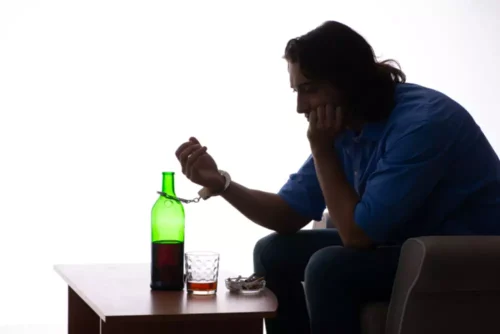They get to know your dependence and related factors for treatment before you start on your road to recovery. By targeting both the physical and psychological symptoms of a substance use disorder, patients can safely physiological dependence on alcohol and effectively be treated. Let’s take a deeper look into the differences between physical and psychological dependence. Understanding these differences is critical in shaping the approach to addiction treatment.
Discover how stopping drug abuse can reverse related heart damage and pave the way to heart recovery.
By addressing both the physical and psychological aspects of dependence, individuals can work towards achieving long-lasting recovery. Treatment approaches should be tailored to the individual’s needs, and a comprehensive treatment plan should incorporate a combination of medical intervention, therapy, counseling, and support systems. It is important to note that treatment for psychological dependence may also involve medication, particularly in cases where co-occurring mental health disorders are present.

Putting Substance Abuse and Its Effects Behind You at Promises Behavioral Health

According to the Mayo Clinic, the best way to prevent an addiction to a drug is not to take the drug at all. However, if a healthcare provider prescribes a drug with the potential for addiction, extreme care should be taken when using the drug, and all instructions should be followed. Yet, it does this by forcibly speeding up or slowing down the body’s systems. The mind craves these chemicals and reacts negatively when they’re suddenly gone.
Causes of Physical vs. Psychological Dependence
When someone uses narcotics to cope with life’s problems, it is a symptom of psychological dependence rather than physical dependence. When someone is using narcotics to deal with life’s general ups and downs there is a dependency on that drug. This proves to be an unhealthy relationship between the substance and the person. All in all, the only way to look at Addiction is as both a psychological addiction AND a physical addiction that are inextricably liked through our psyche’s presence in the brain, a physical part of the body. It may seem like a small thing, but this distinction makes many users feel as if their problem is less, or more, severe than that of other addicts.
- Understanding the nature of psychological dependence is crucial in order to develop effective treatment strategies that address the underlying psychological and emotional factors contributing to addiction.
- Once you are free from the physical component of this disease, we target the physicological side effects of addiction.
- Physical dependence can happen with the chronic use of many substances— including many prescription drugs, even if taken as instructed.
- We will help manage the physical effects of addiction through medically supervised detoxification.
- Medical detox involves the use of prescription and over the counter medications to help people throughout the detox process.
However, it is possible to become physically dependent on a substance without becoming psychologically addicted. Since addiction is such a complex disease, many people get confused about the difference between physical and psychological dependence. Differentiating between physical and psychological dependence also plays a vital role in formulating long-term recovery strategies. Dependence becomes a problem when people persist in using a substance despite its use causing harm, or when its risk outweighs the benefits.
Treatment Difference Between Physical and Psychological Dependence
With prolonged use, tolerance builds so that the body becomes not only accustomed to the presence of the drug, but also relies upon it for “normal” functioning. In the absence of the drug there is craving, and attempts to cease use suddenly will result in physiological withdrawal symptoms. These symptoms will vary by individual, substance and the severity of the addiction or dependence. While addictions may be accompanied by a physical dependence, and physical dependence typically suggests addiction, this is not always the case. An individual may experience physical dependence without being addicted, such as in the case of prescription painkillers. The body develops tolerance and dependence, but this is not immediately indicative of addiction.
Support groups, such as 12-step programs like Narcotics Anonymous (NA), can provide individuals with a supportive community of people facing similar challenges. The guidance and understanding of others who have gone through similar experiences can be invaluable in the journey towards recovery. Medical detox involves the use of prescription and over the counter medications to help people throughout the detox process. Professional detox centers may even be able to eliminate many withdrawal symptoms, making the process as easy and as comfortable as possible. Physical dependency starts with the brain and progresses through the body, leading to symptoms when the substance is absent or not enough is consumed for the same effect. The body may require higher levels of the drug to prevent symptoms, but there is a limit to how much toxicity the body can handle before shutting down.

Without detox in a supervised environment, there are serious risks, including death. It all depends on how long a person has used a substance, how many they are using, and what they are detoxing from. Symptoms of physical dependency are not limited to the sufferer and may include those in the substance user’s life. The stress and discomfort of withdrawal can consist of fear and anxiety that may manifest in lashing out. Loved ones of those dealing with substance use disorder need to understand that clouded judgment and feelings of desperation and frustration may be taken out on them. Watch for the signs and talk to addiction specialists to start formulating recovery plans.
- Recovering addicts will stop or taper off the substance they are addicted to.
- You need to buy more and more drugs, leaving you with less and less money for life’s essentials.
- Psychological dependence, on the other hand, necessitates a comprehensive approach that focuses on the emotional and behavioral aspects of addiction.
- For instance, people with anxiety disorders may be prescribed Xanax by a doctor.
- So, if we’re going to try to dissect which drugs cause what effects on the body, it’s important that we understand the underlying causes for those effects and that we use the proper language.

Recognizing the need for intervention, understanding available treatment options, and seeking professional help are pivotal for addressing these types of dependence effectively. Physical and psychological dependence are intimately connected, with each influencing the other in a cyclical manner. Physical dependence refers to the physiological adaptations that occur in the body due to prolonged substance use, leading to withdrawal symptoms when the substance is abruptly discontinued. On the other hand, psychological dependence involves the emotional and mental reliance on a substance to cope with negative emotions or to experience pleasure. Psychological dependence, on the other hand, necessitates a comprehensive approach that focuses on the emotional and behavioral aspects of addiction. This may involve therapies such as cognitive-behavioral therapy (CBT), individual counseling, group therapy, and support groups.

